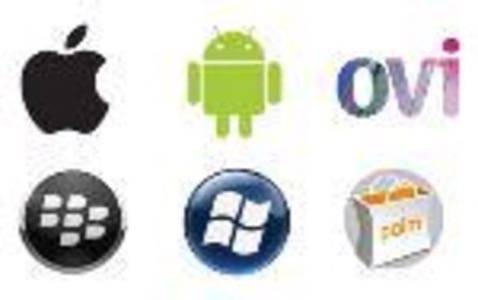The mobile landscape is evolving rapidly with no signs of slowing down. For those who can quickly adapt to the ongoing disruption caused by mobile, tremendous opportunity awaits.

At this morning’s first panel at the Open Mobile Summit in San Francisco, the topic was the evolution of the mobile industry – that is, both where we are now and what’s happening next.
The panel was moderated by Rich Wong, managing partner at Accel Partners and the panelist line up included ?Tyler Lessard, VP global alliances and developer relations at RIM, ?Todd Brix, senior director for Windows Marketplace at Microsoft, ?Jason Kenagy, VP product management at Qualcomm and independent journalist Joe Wilcox.
Smartphone Battle and the Mobile Market
After some brief opening remarks, where Wong mentioned Android’s rise to a 25% share (source: Gartner) and introductions, he asked the panelists their thoughts on the “smartphone battle.” Microsoft’s Brix spoke about how Windows Phone 7 was a sharp break for the company and a new approach. “It’s where we think the market is going in the future,” he said in describing the platform’s goals. The new OS addresses two key things, he said: the user experience, which is now more of a glance-and-go type of setup and integrating the experiences people use more deeply into the handset, including things like Xbox LIVE, Office, Windows Live, social networks and more.

Lessard spoke about how the Blackberry demographic has grown “immensely” over the years, which is in large part due to the social experiences it delivers, like Blackberry Messenger, email, SMS, etc. More recently, RIM has been involved with creating a platform for applications and Web technologies, and is focusing on bringing the HTML5 Web environment to its smartphone and tablet platforms. He also mentioned that RIM plans to support HTML5, Javascript, Flash and AIR, “all of which have their merits,” he said. Wong brought up the Blackberry Playbook, the forthcoming tablet from RIM, and Lessard mentioned how it was enterprise-ready out of the box, referring to its built-in security features.
Kenagy from Qualcomm talked about the feature phone market, a market that caters to the “average Joes around the world,” he said, where price is still a concern to many people. He also talked about feature phone statistics, saying that there are hundreds of millions of feature phones in some parts of the world and tens of millions in the U.S. Brew MP, a newer mobile platform based on Brew, can run apps, even on a device with just a 300 MHz processor, noted Kenagy, which can bring smartphone-type apps to these lower-end phones. You may not be able to multi-task with 10 different applications, he said. But you could at least run apps.
Web Technologies vs. Native Code
Lessard said that in the U.S., we can get a little too focused on North American smartphone stats. RIM has seen tremendous growth in the European, Asian and Pacific markets, he said. And building apps for Blackberry is easy – you can build an app in HTML and get into the Blackberry store in a matter of days. He noted that 75% of App World users are on OS 5 and above, which supports a full Web app framework.

Brix spoke about Windows Phone 7’s single runtime environment – it’s the same on the Web, the Xbox and the mobile; developers just have to optimize for each platform. The benefit to this is that you can build apps quickly, with less testing required. In fact, the average development time for one developer is six weeks, said Brix. And developers can use their same monetization strategies across the platforms, too.
Favorite Apps
Wilcox put the general mobile trends into perspective when it comes to mobile applications. Mobile apps are often simpler on the phone, which can lead to a better user experience, he said. He mentioned that Facebook’s mobile applications were a great example of this.
RIM’s Lessard talked about PageOnce’s financial-alerting application, which is able to integrate directly into the Blackberry inbox, and LinkedIn’s menu integration into the inbox as a way Blackberry apps can move to the forefront of the user experience.
Brix mentioned that some of the most innovative apps on Windows Phone 7 come from the Xbox. Playing games socially with others, even those on the Xbox and being able to invite friends to play games, are unique features for the Windows Phone 7 platform. “It’s not about a single app,” said Brix. It’s the overall experience.
How Do Developers Make Money?
Wong said the three primarily monetization models are ad-supported, paid downloads (subscription or one-time downloads) and virtual currency models. He asked the panelists if they knew of others and what trends they were seeing.

Lessard said that long-tail, downstream opportunities built upon heavy engagement with the user are an emerging trend for monetization. RIM is seeing more people shifting to that method, but developers have to determine first how to continually engage users and then how do you monetize that engagement? He also mentioned the recent launch of the Blackberry advertising service, which aggregates ad networks. Carrier billing, especially in global market, is an emerging trend as is affiliate revenue. He referened a travel app that refers customers to hotels to generate affiliate revenue as an example of this. Often it’s not a matter of picking one method, but combining them, said Lessard.
For Windows Phone 7, Brix said that paid model is not working – close to 80% of smartphone users never pay for anything, he said. Microsoft recommends developers start with an ad-funded freemium model and Microsoft provides a service for this. Then you can push those free users to paid users, once you’ve convinced them of the value. Mobile operator billing is another option, and Windows Phone 7 devices on AT&T support this method.




















